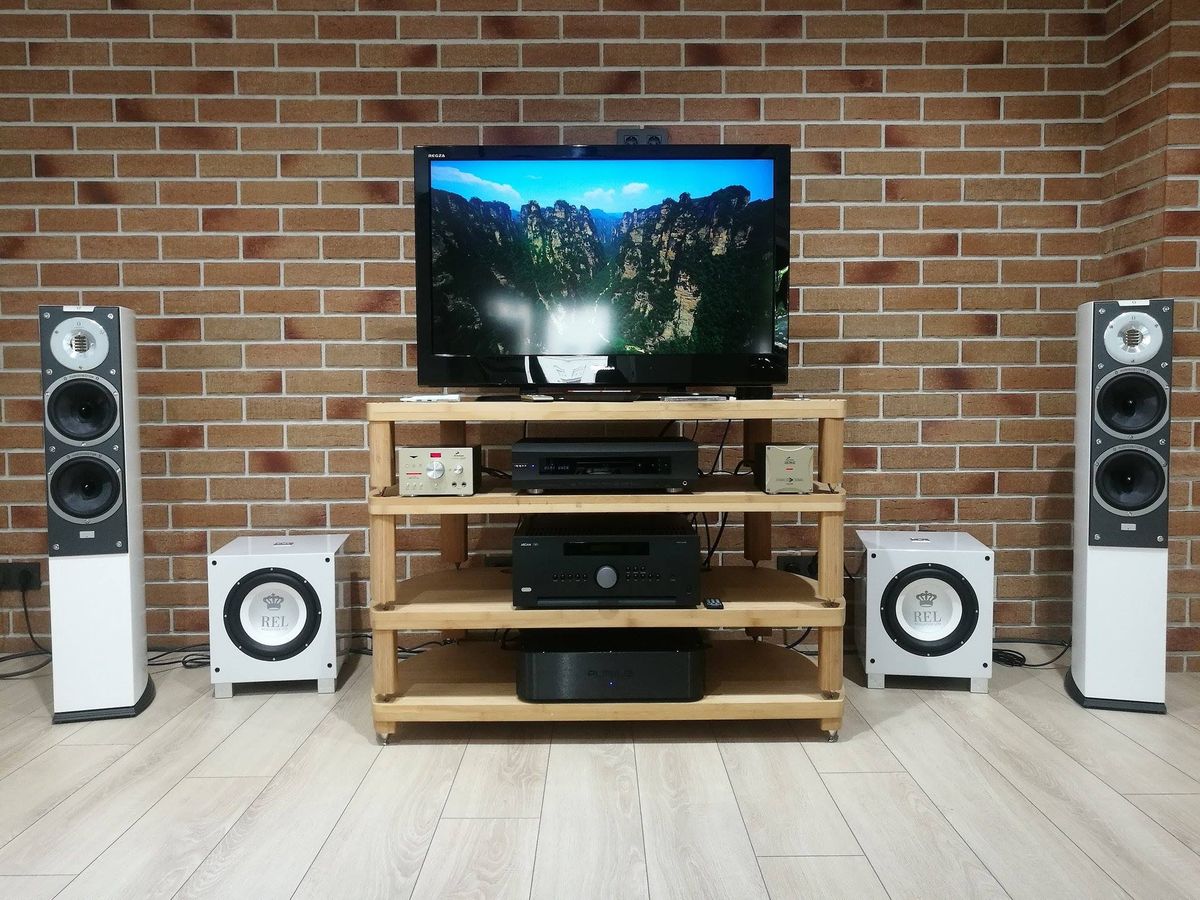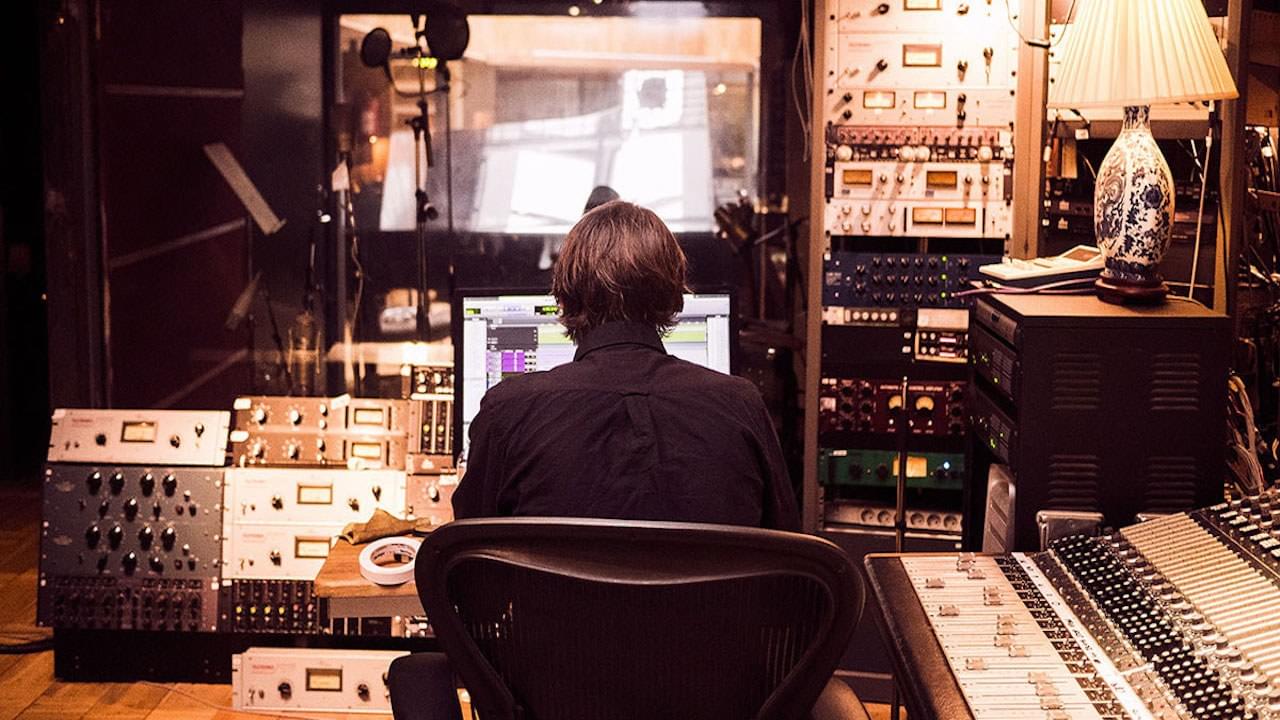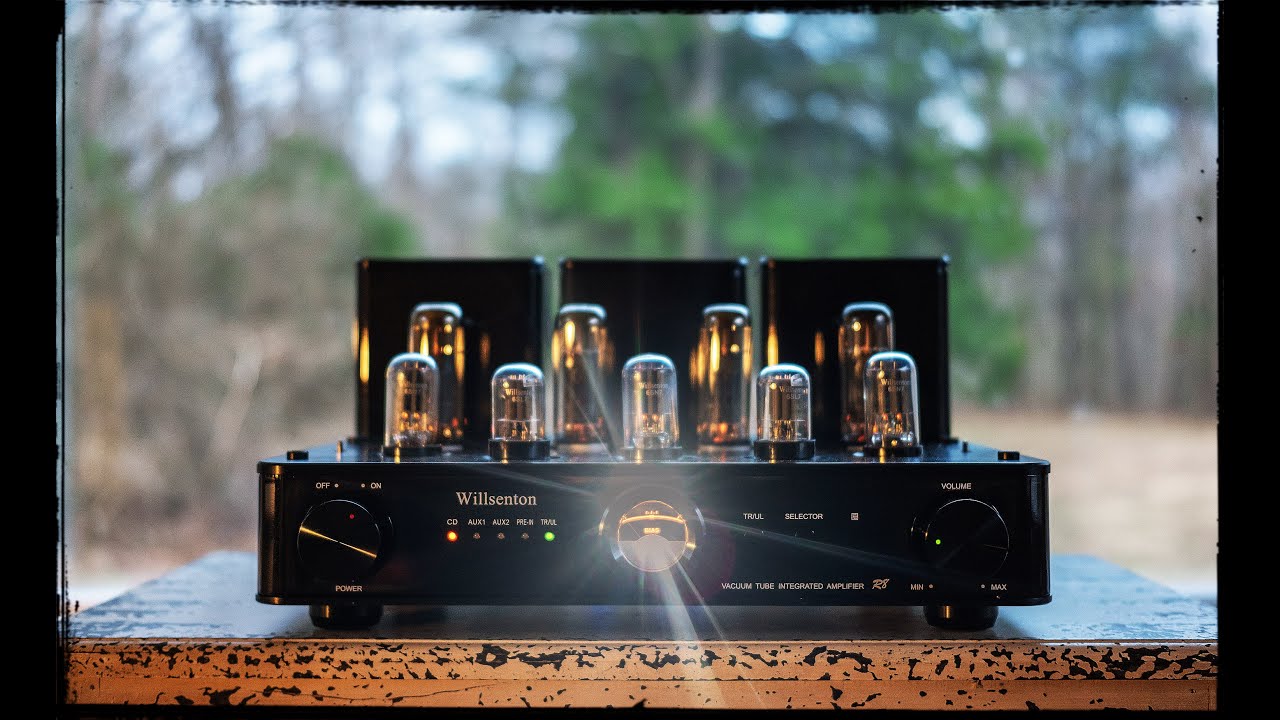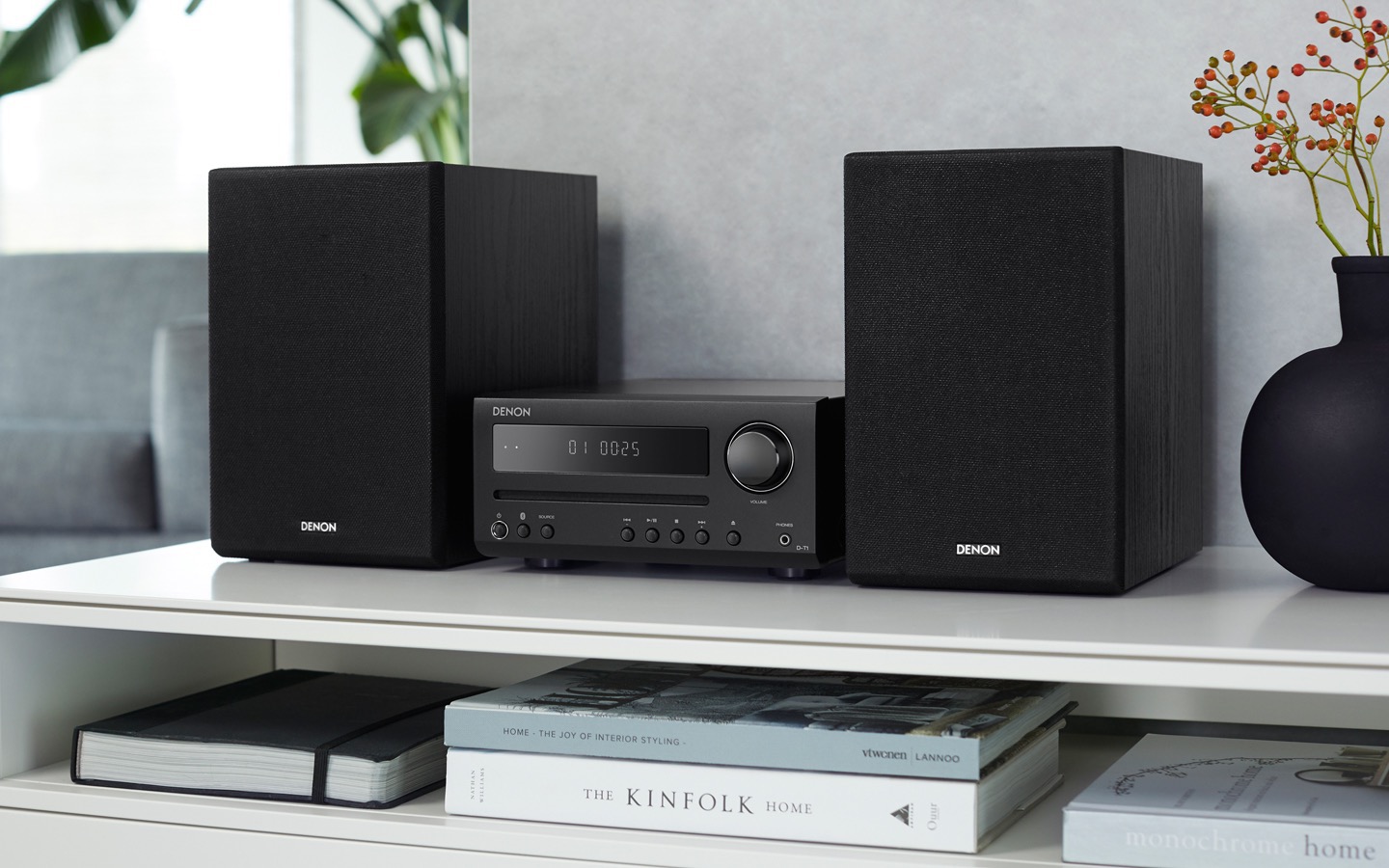Home>Production & Technology>Stereo>How To Build Your Own Stereo System


Stereo
How To Build Your Own Stereo System
Modified: January 22, 2024
Learn how to build your own stereo system with our comprehensive guide. Discover the best speakers, amplifiers, and components for creating your ultimate stereo setup.
(Many of the links in this article redirect to a specific reviewed product. Your purchase of these products through affiliate links helps to generate commission for AudioLover.com, at no extra cost. Learn more)
Table of Contents
Introduction
Welcome to the world of stereo systems, where exceptional audio quality meets immersive listening experiences. Whether you’re an audiophile looking to build your dream setup or a casual music lover who wants to elevate their listening pleasure, building your own stereo system can be a rewarding and enjoyable endeavor. In this guide, we’ll walk you through the essential steps of building a stereo system that fits your budget, goals, and personal preferences.
Having a dedicated stereo system allows you to experience music, movies, and games in a whole new way. It brings depth and clarity to every note, immersing you in the subtle nuances of the audio. With the right components and setup, you can create an audio oasis right in your own home.
Before diving into the technical aspects, it’s important to define your budget and goals. Are you looking for a budget-friendly system that still delivers impressive sound quality, or are you willing to invest in high-end components for a truly mesmerizing audio experience? Knowing your budget will help you narrow down your choices and make informed decisions.
Next, let’s talk about the heart of any stereo system: the speakers. The right speakers can make or break your listening experience, so it’s crucial to choose ones that suit your taste and room size. We’ll discuss various types of speakers and their characteristics to help you make the best choice.
After selecting the speakers, you’ll need an amplifier to power them. The amplifier acts as the command center, enhancing the weak audio signal from the source components and delivering it to the speakers with the necessary power. We’ll guide you through the amplifier selection process, considering factors such as power output, connectivity options, and compatibility with your speakers.
Speaking of source components, these are the devices that provide the audio signal to your amplifier. This can include CD/DVD players, turntables, streaming media players, or even your smartphone or computer. We’ll explore different options and help you choose the right source components for your needs.
Of course, no stereo system is complete without the right cables and accessories. From speaker cables to interconnects, every connection in your system can have an impact on the sound quality. We’ll discuss the different cable types, connectors, and accessories that you may need to optimize the performance of your system.
Once you’ve gathered all the necessary components, it’s time to set up and position your system for optimal sound. Proper speaker placement, room acoustics, and strategic positioning of the equipment all play a role in achieving the best audio performance. We’ll provide tips and guidelines to help you set up your system effectively.
Lastly, we’ll delve into the fine-tuning and adjustments that can further enhance your listening experience. From adjusting the bass and treble levels to exploring audio calibration tools, we’ll equip you with the knowledge to fine-tune your system and achieve the desired sound signature.
Building your own stereo system is a journey that allows you to tailor the audio experience to your unique preferences. So, grab your favorite beverage, sit back, and let’s embark on this exciting adventure of creating your very own personalized stereo system.
Step 1: Determine Your Budget and Goals
Before embarking on the journey of building your stereo system, it’s crucial to determine your budget and goals. This step will help you make informed decisions and ensure that you’re investing in the right components that align with your expectations.
First and foremost, establish a realistic budget for your stereo system. By having a clear idea of how much you’re willing to spend, you can narrow down your options and focus on components that fall within your price range. Keep in mind that while it’s tempting to go for the most expensive equipment, there are plenty of affordable options that deliver excellent sound quality.
Next, consider your goals for the stereo system. Are you a music enthusiast who wants to recreate a concert-like experience in your home? Or are you primarily using the system for movie nights and gaming sessions? Understanding your priorities will help you determine which aspects of the system to prioritize. For example, if music is your main focus, you may want to allocate a larger portion of your budget toward high-quality speakers and a reliable amplifier.
Additionally, think about the size of the room where the stereo system will be located. Smaller rooms may require different components or speaker types compared to larger rooms. It’s important to choose speakers and amplifiers that are appropriate for the space to ensure optimal sound performance.
Once you have established your budget and goals, it’s time to do some research. Look for reviews and recommendations of different components within your price range. Consider factors such as sound quality, durability, and compatibility with other devices.
Don’t be afraid to visit audio stores and listen to different systems for yourself. Hearing the sound firsthand can provide valuable insights and help you make a more informed decision. Take note of the sound signature and overall experience offered by various setups, and consider how well they align with your personal preferences.
Remember, building a stereo system is an investment, and it’s important to choose components that you will be satisfied with in the long run. However, it’s also okay to start with a basic setup and gradually upgrade as your budget allows. The key is to strike a balance between your budget, goals, and desired audio experience.
By determining your budget and goals upfront, you’ll be well-prepared to navigate the world of stereo systems and make informed decisions. So, take your time, do your research, and get ready to embark on a satisfying journey of building your own personalized audio oasis.
Step 2: Selecting the Right Speakers
When it comes to building a stereo system, the speakers you choose play a vital role in delivering an immersive and high-quality audio experience. Selecting the right speakers for your system requires careful consideration of various factors, including your budget, room size, and personal audio preferences.
First and foremost, determine your budget for the speakers. This will help narrow down your options and ensure that you’re exploring models that align with your financial constraints. Remember, it’s not necessary to break the bank in order to find speakers that provide exceptional sound quality.
Consider the size of the room where the speakers will be placed. Larger rooms typically require speakers with higher power handling capabilities to fill the space with sufficient volume and clarity. On the other hand, smaller rooms may be better suited for compact speakers that can still deliver impressive sound without overwhelming the space.
Next, think about the type of speakers that best suit your audio preferences. There are several options to choose from, including floor-standing speakers, bookshelf speakers, in-wall or in-ceiling speakers, and even wireless speakers. Each type has its own advantages and considerations.
Floor-standing speakers are known for their impressive sound quality and bass response. They are freestanding and provide a powerful audio presence. However, they can be bulky and require adequate space for optimal positioning.
Bookshelf speakers, on the other hand, are compact and versatile. They can be placed on bookshelves or mounted on stands, making them suitable for smaller rooms or areas with limited space. Despite their smaller size, many bookshelf speakers offer excellent sound performance.
In-wall or in-ceiling speakers are designed to be discreetly integrated into the walls or ceiling of a room. They provide a clean and seamless appearance, eliminating the need for separate speakers taking up floor or shelf space. These speakers are ideal for installations where aesthetics is a priority.
Wireless speakers offer the convenience of being able to connect and stream audio without the need for cables. They are typically compact and portable, making them suitable for on-the-go listening or multi-room setups. While wireless speakers have come a long way in terms of sound quality, they may not match the performance of wired speakers in high-fidelity applications.
When selecting speakers, consider the frequency response range and sensitivity. The frequency response range indicates the range of frequencies that the speakers are capable of reproducing. A wider range allows for more accurate and detailed audio reproduction. The sensitivity rating refers to how efficiently the speakers convert power into sound. Higher sensitivity speakers require less power to produce a given volume, making them a good match for lower-powered amplifiers.
Finally, don’t forget to listen to the speakers before making a final decision. Visit audio stores or attend audio equipment demonstrations to experience the sound quality and performance of different models firsthand. Pay attention to the clarity, tonal balance, imaging, and overall presentation of the speakers.
By carefully considering your budget, room size, audio preferences, and the different types of speakers available, you can select the right speakers that will elevate your listening experience and bring your stereo system to life.
Step 3: Choosing the Amplifier
The amplifier is the backbone of your stereo system, responsible for powering your speakers and delivering accurate and powerful audio reproduction. Choosing the right amplifier is crucial to ensure optimal performance and compatibility with your selected speakers.
When selecting an amplifier, there are a few key factors to consider. The first is power output. The power rating of an amplifier is measured in watts per channel (WPC) and indicates how much power the amplifier can deliver to each speaker. It’s important to match the power output of the amplifier to the power requirements of your speakers to ensure they can be driven to their full potential. A low-powered amplifier will not be able to adequately drive high-power speakers, resulting in poor sound quality and potential damage to the speakers.
Furthermore, consider the impedance rating of your speakers. Impedance is measured in ohms and represents the resistance that the speakers present to the amplifier. It is essential to choose an amplifier that can handle the impedance rating of your speakers. Most amplifiers are designed to work with speakers that have an impedance of 4 or 8 ohms, but it’s important to consult the specifications of both the amplifier and the speakers to ensure proper compatibility.
Another consideration is the connectivity options provided by the amplifier. Determine the inputs and outputs you require based on your audio sources and other components. Common input options include RCA, balanced XLR, and optical or coaxial digital inputs. Some amplifiers may also have Bluetooth or Wi-Fi connectivity for wireless streaming.
In addition to power and connectivity, pay attention to the amplifier’s features and controls. Look for features such as tone controls, input selectors, and headphone outputs that may enhance your listening experience and provide convenience. Some amplifiers also offer built-in phono stages for connecting a turntable directly, eliminating the need for a separate phono preamp.
The size and design of the amplifier should also be taken into account. Consider the available space in your setup and choose an amplifier that fits without obstructing ventilation or causing overcrowding. Some amplifiers offer sleek and stylish designs that can complement your aesthetic preferences.
Keep in mind that the amplifier should be selected in conjunction with your chosen speakers. Consider the sensitivity of the speakers and how well they match with the power output capabilities of the amplifier. It’s important to achieve the right balance between the amplifier and the speakers to achieve optimum sound quality.
Lastly, listen to different amplifiers before making your final decision. Pay attention to the sound quality, clarity, and overall tonal balance that each amplifier provides. This will give you a better understanding of how well it matches with your speakers and personal audio preferences.
By considering factors such as power output, impedance, connectivity options, features, size, and design, you can choose an amplifier that complements your speakers and delivers the power and performance necessary to bring your stereo system to life.
Step 4: Picking the Right Source Components
When building your stereo system, selecting the right source components is essential to ensure high-quality audio reproduction. Whether you prefer physical media like CDs and vinyl records or digital streaming, there are various source options to suit your preferences and provide the best audio experience.
One of the most common source components is a CD/DVD player. These players allow you to enjoy your collection of CDs and DVDs with excellent audio quality. Look for players that offer features like high-resolution audio support and digital-to-analog converters (DACs) to enhance the sound output. Some players even include Internet connectivity for online streaming services.
If you’re a fan of vinyl records, a turntable is a must-have source component. Look for turntables that offer adjustable tonearms, high-quality cartridges, and built-in phono stages for accurate and detailed sound reproduction. You may also consider options with USB connectivity, allowing you to digitize your vinyl collection.
In today’s digital age, streaming media players have become increasingly popular. These devices, such as network streamers or media consoles, allow you to stream music from various online platforms and services. They often support high-resolution audio formats and offer extensive connectivity options, including Wi-Fi, Bluetooth, and USB.
Your smartphone or computer can also serve as a source component. By connecting your device to the amplifier or using wireless streaming options, you can play music directly from your preferred audio apps or personal music library. This provides flexibility and convenience, as you can easily access and control your music collection.
It’s worth noting that digital-to-analog converters (DACs) can significantly impact the sound quality when using digital sources. A separate DAC can convert digital audio signals into analog signals more effectively than the built-in DACs found in many source components. Consider investing in a high-quality DAC if you want to further improve the sound reproduction of your digital sources.
When selecting source components, explore the connectivity options they offer. Look for components with both analog and digital outputs to ensure compatibility with your amplifier and other devices. If you have multiple sources, consider the availability of multiple input options on your amplifier to accommodate all your devices.
Listening to different source components is crucial in making a final decision. Visit audio stores or attend demonstrations to experience firsthand the audio quality offered by different players and streamers. Pay attention to the detail, clarity, and overall sound presentation to find the source component that aligns with your personal audio preferences.
Ultimately, the right source components will provide you with a seamless and enjoyable listening experience, whether you’re enjoying analog music from vinyl records or streaming your favorite songs from online platforms. Choose the source components that best suit your audio preferences and integrate them into your stereo system for optimal performance and flexibility.
Step 5: Selecting Cables and Accessories
When building a stereo system, selecting the right cables and accessories is essential to ensure optimal signal transmission and enhance your overall audio experience. The quality of your cables and accessories can significantly impact the sound quality and overall performance of your system.
Let’s start with speaker cables. These cables connect your amplifier to your speakers and carry the audio signal. It’s important to choose cables that have sufficient gauge (thickness) to minimize resistance and signal loss. Thicker gauge cables are generally recommended for longer distances or when using speakers with low impedance. Look for cables made from high-quality materials with proper shielding to minimize interference and ensure clean and clear audio transmission.
Next, consider interconnect cables. These cables connect your source components to your amplifier and transmit the audio signal. They can include RCA, XLR, or optical cables, depending on the type of connections your components have. Similar to speaker cables, look for interconnect cables that are well-shielded to minimize interference and signal degradation.
When choosing cables, it’s important to strike a balance between quality and cost. While high-end cables may offer superior construction and better shielding, they may come with a hefty price tag. On the other hand, there are affordable options available that still provide decent performance. Consider your budget and the level of performance you expect from your system when selecting cables.
Aside from cables, there are various accessories that can enhance your stereo system. Power conditioners or surge protectors can help protect your components from power surges and deliver clean power to your audio equipment. These accessories can reduce electrical noise and improve the clarity of your audio signal.
Speaker stands and equipment racks are other accessories to consider. Speaker stands provide proper positioning and isolation for your speakers, which can improve sound dispersion and imaging. Equipment racks help organize and support your audio components, reducing vibrations and potential interference.
Remote controls and wireless adapters are additional accessories that can add convenience and flexibility to your system. Remote controls allow you to control your amplifier, source components, and other devices from a distance. Wireless adapters, such as Bluetooth or Wi-Fi modules, enable wireless connectivity for streaming audio from your smartphones, tablets, or computers.
Don’t forget about cable management and organization. Cable ties, cable raceways, and cable sleeves can help keep your cables neat and tidy, reducing clutter and potential cable damage.
Lastly, consider investing in room treatments to improve the acoustics of your listening space. Acoustic panels, bass traps, and diffusers can help reduce echo, control reflections, and enhance the overall sound quality in your room.
When selecting cables and accessories, ensure compatibility with your components and consider the overall aesthetics of your system. It’s important to strike the right balance between performance, functionality, and visual appeal.
By carefully selecting cables and accessories that are suitable for your system and room environment, you can optimize signal transmission, protect your equipment, and create an immersive and enjoyable audio experience.
Step 6: Setting Up and Positioning the System
Setting up and positioning your stereo system correctly is crucial to achieving the best possible audio performance. The placement of your speakers, amplifier, and other components can have a significant impact on the sound quality and overall listening experience. Follow these guidelines to optimize your system’s setup:
First, consider the placement of your speakers. Ideally, they should be positioned so that the sound is evenly distributed throughout the listening area. For stereo setups, the speakers should be placed equidistant from the listening position, forming an imaginary triangle. This triangle, commonly known as the “sweet spot,” helps create a balanced soundstage and imaging.
Avoid placing the speakers too close to walls or corners, as this can cause unwanted bass reflections and affect the overall clarity of the sound. Experiment with different speaker placements, making small adjustments until you find the optimal position that best suits your room and personal audio preferences.
Aside from the speaker placement, consider the listening position. It’s best to sit at a distance that forms an equilateral triangle with the speakers. This allows for a more immersive and balanced soundstage. Experiment with the listening distance to find the spot that offers the best audio performance for you.
When positioning your amplifier and source components, keep in mind that they should be placed in close proximity to each other to minimize cable length and signal loss. Additionally, ensure proper ventilation around the amplifier to prevent overheating.
Room acoustics play a crucial role in the overall sound quality. Consider adding acoustic treatments to your room to reduce unwanted reflections and reverb. Acoustic panels, bass traps, and diffusers can help optimize the sound by absorbing or diffusing sound waves, resulting in clearer and more accurate audio reproduction.
Pay attention to cable management and organization. Keep cables neatly organized and avoid placing them near power cords or other potential sources of interference. This can help reduce electromagnetic interference and signal degradation.
Finally, don’t underestimate the importance of calibration and fine-tuning. Use an SPL (Sound Pressure Level) meter to ensure balanced volume levels between the speakers and optimize the overall listening experience. Adjust the angles, tilt, and toe-in of the speakers to refine the soundstage and imaging. Fine-tune the bass and treble controls according to your personal preferences and room acoustics.
Remember to take the time to experiment and refine your system’s setup. Small adjustments can have a significant impact on the sound quality. Trust your ears and make changes based on what you perceive as the most pleasing and balanced sound.
By setting up and positioning your stereo system thoughtfully, you can maximize the performance and enjoy a truly immersive audio experience in the comfort of your own home.
Step 7: Fine-Tuning and Adjusting the Sound
Once you have set up your stereo system with care, it’s time to fine-tune and adjust the sound to suit your personal preferences and optimize the audio performance. Small adjustments in settings and controls can make a significant difference in achieving the desired sound signature. Follow these steps to fine-tune your system:
Start by adjusting the tone controls, which are typically found on the amplifier or preamplifier. The bass and treble controls allow you to boost or cut frequencies at the low and high ends of the audio spectrum. Experiment with these controls to find the balance that complements your listening preferences and room acoustics. Be mindful not to go overboard with the adjustments as it can result in an unnatural sound.
Consider using a graphic equalizer or digital signal processor (DSP), if available, to adjust the frequency response of your system. These tools allow you to make more precise adjustments across a wider frequency range. Take note of any room resonances or frequency imbalances and make adjustments accordingly.
If your amplifier has different sound modes or presets, explore these options to see if they enhance your listening experience. Modes such as “Stereo,” “Concert Hall,” or “Movie” can modify the soundstage and spatial effects according to the content you’re listening to. Experiment and choose the mode that provides the most enjoyable and immersive experience for you.
Consider utilizing room correction software or hardware. These tools analyze the acoustic characteristics of your listening room and automatically adjust the sound output to compensate for room resonances and standing waves. Room correction can significantly improve the accuracy and balance of the audio reproduction.
Don’t forget to adjust the balance between the left and right speakers. Use test tones or a balance control to ensure that the sound is evenly distributed and centered between the speakers. This will help to achieve a more accurate and precise stereo image.
Take the time to listen to familiar songs or audio tracks while making the adjustments. This will provide a reference point for evaluating the impact of the changes you are making. Trust your ears and make adjustments based on what sounds best to you.
Consider getting a sound meter or using a sound meter app to measure the sound pressure levels (SPL) in your listening room. Aim for comfortable listening levels without causing fatigue or distortion. Pay attention to the recommended SPL range provided by the speaker manufacturer to ensure you are within the safe listening range.
Finally, enjoy the process of fine-tuning your system. Fine-tuning is subjective and personal, so take your time to find the balance that suits your audio preferences. Remember that every room is acoustically unique, so what works for one person may not work for another.
By fine-tuning and adjusting the sound, you can tailor your stereo system to deliver an audio experience that truly reflects your preferences and allows you to immerse yourself in the music, movies, and games you love.
Conclusion
Congratulations on successfully building your own stereo system! By following the steps outlined in this guide, you have taken the journey from selecting the right components to fine-tuning and adjusting the sound to create a setup that meets your audio goals and preferences.
Building a stereo system is an exciting and rewarding experience that allows you to tailor the audio performance to your liking. Throughout the process, you have considered factors such as budget, room size, and personal audio preferences to make informed decisions about speakers, amplifiers, source components, cables, and accessories.
You have learned the importance of proper setup and positioning, considering aspects like speaker placement, listening position, and room acoustics. By taking the time to fine-tune and adjust the sound, you have further enhanced your audio experience and achieved the desired sound signature.
Remember, building a stereo system is an ongoing journey. As your budget and preferences change, you may wish to upgrade components or explore new technologies. Stay open to new possibilities and continue to experiment with different setups and configurations to continue improving your system.
Now, sit back and enjoy the fruits of your labor. Immerse yourself in the world of rich, detailed sound, and indulge in the pleasure of a truly immersive audio experience. Explore your music collection, dive into your favorite movies, and get lost in the ambiance of video games.
Share your passion for music and sound with others. Invite friends and loved ones to enjoy the beauty of your stereo system and create cherished memories together. Let the magic of music and audio transport you to new heights of emotion and pleasure.
Remember, at the heart of it all, it’s about enjoying and appreciating the power of sound. Share your experiences, explore new genres, and continue to learn and grow as an audio enthusiast.
Thank you for taking this journey with us. We hope this guide has provided valuable insights and guidance, and we wish you many extraordinary moments with your personalized stereo system.











